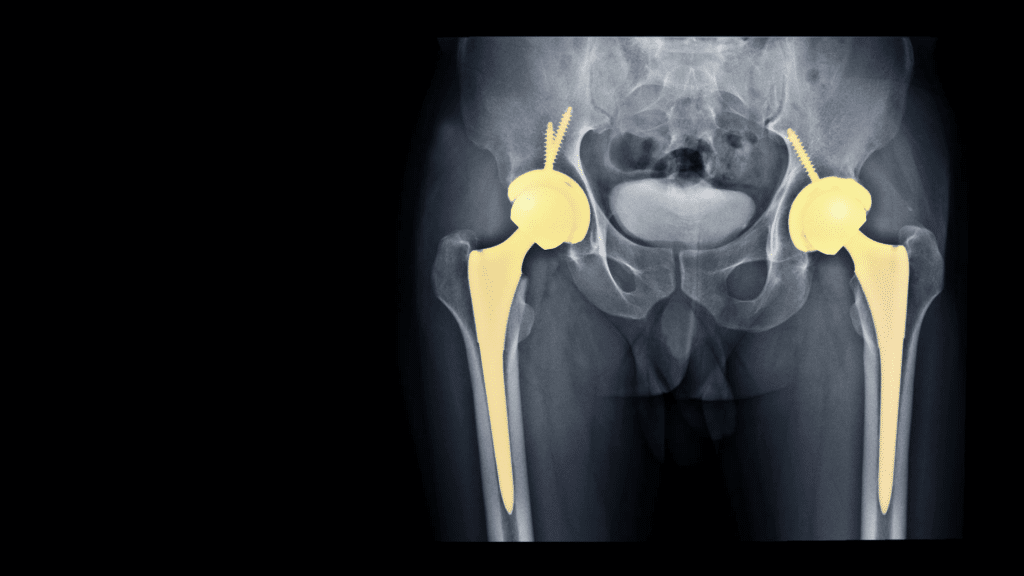Total hip replacement surgery, also known as total hip arthroplasty, is a surgical procedure that is performed to alleviate pain and restore function in individuals suffering from hip joint damage or degenerative conditions. The hip joint plays a crucial role in supporting our body weight and facilitating smooth movement. However, due to various factors such as aging, injury, or diseases like arthritis, the hip joint can become damaged, causing pain, stiffness, and limited mobility.
When other conservative treatments such as medication, physical therapy, or assistive devices fail to provide relief, total hip replacement surgery is often considered. This surgical intervention involves replacing the damaged hip joint with a prosthetic implant, typically made of metal, ceramic, or plastic materials. The goal of total hip replacement surgery is to relieve pain, improve joint function, and enhance the patient’s overall quality of life.
Signs and Symptoms That May Require Total Hip Replacement Surgery
It is crucial to recognize the signs and symptoms that may indicate the need for total hip replacement surgery. Persistent hip pain, especially during weight-bearing activities like walking or climbing stairs, is a common symptom. The pain may also radiate to the groin, thigh, or buttocks. Stiffness in the hip joint, which limits range of motion and makes it difficult to perform daily activities, is another red flag. Additionally, individuals may experience a grinding or popping sensation in the hip joint, decreased mobility, and difficulty in putting on shoes or socks.
If these symptoms persist despite conservative treatments, it is essential to consult with a healthcare professional for a thorough evaluation. They will assess the severity of the hip joint damage, determine the underlying cause, and recommend appropriate treatment options, including total hip replacement surgery if necessary.
Preparing for Total Hip Replacement Surgery
Adequate preparation is crucial to ensuring a successful outcome before total hip replacement surgery. The healthcare team will guide the patient through the necessary steps to minimize complications and promote optimal recovery. This preparation may include a series of pre-operative assessments, such as blood tests, imaging scans, and a physical examination, to assess the patient’s overall health and suitability for surgery.
In some cases, the healthcare team may recommend lifestyle modifications to improve the patient’s general well-being. This may involve weight loss, smoking cessation, and optimizing any existing medical conditions, such as diabetes or high blood pressure.
Furthermore, patients will receive detailed instructions regarding pre-operative fasting, medication management, and what to expect on the day of surgery. It is essential to follow these instructions closely to ensure a smooth surgical experience and reduce the risk of complications.
The Procedure
Total hip replacement surgery is typically performed under general anesthesia, ensuring that the patient remains unconscious and pain-free throughout the procedure. The surgical team will make an incision over the hip joint, carefully accessing the damaged joint. The damaged bone and cartilage will be removed, and the new prosthetic implant will be securely placed in position.
The prosthetic implant consists of several components, including a metal stem inserted into the femur (thighbone), a metal or ceramic ball that replaces the damaged femoral head, and a socket made of metal, plastic, or ceramic that replaces the damaged hip socket. The prosthetic components are specifically designed to replicate the natural structure and function of the hip joint.
After the prosthetic components are securely in place, the surgical incision will be closed using sutures or staples. The surgical team will carefully monitor the patient’s vital signs and administer appropriate pain management techniques during the recovery period.
Recovery and Rehabilitation
Following total hip replacement surgery, a comprehensive recovery and rehabilitation plan is essential to ensure a successful outcome. The patient will be closely monitored in a hospital setting initially, typically for a few days, to manage pain, prevent complications, and promote early mobility.
Physical therapy plays a crucial role in the rehabilitation process, starting shortly after the surgery. The physical therapist will guide the patient through specific exercises and techniques to improve range of motion, strengthen the hip joint, and regain mobility. Initially, weight-bearing may be limited, and the patient may require assistive devices such as crutches or a walker. As the healing progresses, the patient will gradually transition to full weight-bearing and regain independence in daily activities.
The recovery timeline varies for each individual, but most patients can expect significant improvement within a few months of the surgery. However, full recovery and optimal results may take up to a year. It is crucial to follow the healthcare team’s instructions, attend regular follow-up appointments, and communicate any concerns or difficulties experienced during the recovery process.
Success Rates and Patient Satisfaction
Total hip replacement surgery has proven to be highly successful in relieving pain and improving quality of life for individuals with hip joint damage. Studies have shown that the procedure has a high success rate, with over 95% of patients experiencing significant pain relief and functional improvement. The longevity of the prosthetic implant is also impressive, with many patients enjoying pain-free mobility for over 20 years.
Moreover, patient satisfaction with total hip replacement surgery is consistently high. Individuals often report a dramatic reduction in pain, improved mobility, and a return to activities they previously enjoyed. The surgery not only enhances physical well-being but also has a positive impact on mental and emotional health, restoring confidence and independence.
Regaining Mobility and Quality of Life with Total Hip Replacement Surgery
Total hip replacement surgery offers individuals the opportunity to regain mobility and improve their quality of life. By alleviating pain, restoring joint function, and enhancing overall mobility, this surgical intervention enables individuals to engage in activities they may have previously had to avoid due to hip joint damage.
The benefits of total hip replacement surgery go beyond physical improvements. Patients often experience a significant reduction in pain, leading to improved sleep, mood, and overall well-being. With restored mobility, individuals can once again participate in recreational activities, exercise, and maintain an active lifestyle. This surgery provides the opportunity for individuals to reclaim their independence and live life to the fullest.
If you are experiencing persistent hip pain or limited mobility, it is essential to consult with a healthcare professional to determine if total hip replacement surgery is the right option for you. Regaining mobility and quality of life is possible with the help of this life-changing procedure.
Consult with a healthcare professional today to explore the possibility of total hip replacement surgery and take the first step towards regaining your mobility and quality of life.

